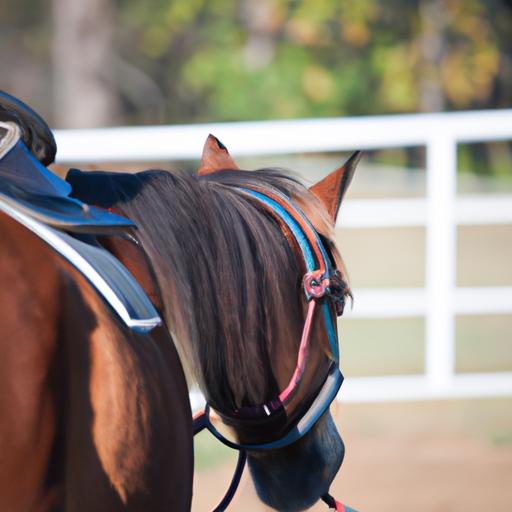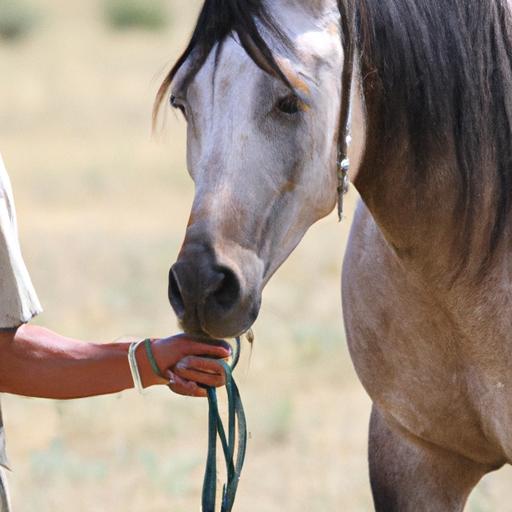Unlock the secrets of successful horse training 101. Learn the importance of consistency, designing a training schedule, and incorporating rest for optimal results.
Introduction
What is horse training? It’s the gateway to unlocking the incredible potential of your equine partner, fostering a harmonious bond built on trust and understanding. Whether you’re a seasoned equestrian or a novice horse enthusiast, mastering the art of horse training is essential for a fulfilling and safe partnership.
Importance of Proper Horse Training
Picture this: a majestic horse gracefully responding to your slightest cue, moving in perfect harmony with your commands. This level of connection and cooperation is only achievable through proper horse training. By investing time and effort into training your horse, you lay a solid foundation for a healthy and successful relationship.
Benefits of Horse Training for Horse Owners
Embarking on the journey of horse training reaps numerous benefits for both you and your equine companion. For starters, it establishes a sense of discipline and respect, ensuring your horse follows basic ground manners. As you progress, you’ll witness the transformation of a spirited creature into a well-behaved partner, making every ride a joyous experience. Additionally, proper horse training enhances safety, reducing the likelihood of accidents caused by unruly behavior.
As a horse owner, horse training empowers you with the skills necessary to communicate effectively with your four-legged friend. It opens up a world of possibilities, allowing you to teach your horse a wide range of commands, from the fundamental walk, trot, and canter to more advanced movements like lateral maneuvers. With each accomplishment, your confidence as a rider and trainer will soar.
Remember, horse training is not a one-size-fits-all approach. Every horse is unique, and understanding their individual needs and temperament is key to tailoring your training methods effectively. So, fasten your seatbelt and join me on this remarkable journey of horse training 101, where we’ll unravel the secrets of creating a profound and fulfilling connection with our equine companions.
Stay tuned for the upcoming sections, where we’ll delve deeper into the fascinating world of horse behavior, explore essential training equipment, and master fundamental training techniques that will set the stage for a successful training journey.
Next up: Section 2 – Understanding Horse Behavior.
Understanding Horse Behavior

Instincts and Natural Behavior of Horses
Horses are magnificent creatures that possess unique instincts and natural behaviors ingrained in their DNA. Understanding these innate characteristics is crucial when embarking on the journey of horse training. As prey animals, horses have evolved to be highly sensitive to their surroundings, always on alert for potential threats. They have an acute sense of hearing and a panoramic field of vision, allowing them to detect even the slightest movements in their environment.
Additionally, horses are social animals that thrive on companionship. They have a hierarchical structure within their herds, with a clear leader and established pecking order. Recognizing and respecting these natural instincts can significantly impact your training approach, as it allows you to work with your horse’s innate nature rather than against it.
Developing a Bond and Trust with Your Horse
Building a strong bond and fostering trust with your horse is the foundation of successful training. Just like any relationship, trust is earned through consistency, patience, and understanding. By spending quality time with your horse, grooming them, and engaging in activities beyond training, you create a sense of companionship and mutual respect.
To establish trust, it’s essential to approach your horse with kindness and empathy. Avoid using force or harsh methods, as this can lead to fear and resistance. Instead, focus on positive reinforcement techniques, rewarding desired behaviors with praise, treats, or a gentle pat. By creating a positive association with training, you’ll encourage your horse to willingly participate and engage in the learning process.
Recognizing Different Horse Body Language and Communication
Horses are exceptional communicators, expressing their thoughts and emotions through subtle body language. Learning to decipher these non-verbal cues is essential for effective training and understanding your horse’s state of mind. Pay close attention to their ears, tail, eyes, and overall posture, as these can provide valuable insights into their mood and intentions.
For example, a relaxed horse will have their ears forward, softly swaying tail, and a calm expression. Conversely, pinned back ears, a swishing tail, or wide eyes may indicate discomfort or agitation. By honing your ability to interpret these signals, you can adjust your training approach accordingly, ensuring that your horse feels understood and supported.
Stay tuned for Section 3, where we’ll dive into the essential equipment and tools needed for successful horse training.
Basic Equipment and Tools for Horse Training
Essential Equipment for Horse Training
When it comes to horse training, having the right equipment is paramount. Here are some essential items that should be in every horse owner’s toolkit:
-
Halters: A well-fitting halter is a must-have for any horse training session. Choose a halter made of durable material that provides comfort and control. Nylon and leather halters are popular choices.
-
Leads: Leads, also known as lead ropes, are used to guide and control your horse’s movement during training. Opt for leads made of sturdy material, such as cotton or nylon, with a length that allows for safe handling.
-
Lunge Lines: Lunge lines are longer leads that enable you to work your horse in a circle during lunging exercises. They provide freedom of movement while maintaining control. Select a lunge line that is at least 25 feet long and made of a durable material like cotton or nylon.
Types of Halters, Leads, and Lunge Lines
Now, let’s take a closer look at the different types of halters, leads, and lunge lines available:
-
Halters: There are various types of halters to choose from, including rope halters, flat halters, and breakaway halters. Each type serves a specific purpose, so it’s essential to select the one that best suits your training needs and your horse’s comfort.
-
Leads: Leads come in different lengths and styles, such as snap leads, rope leads, and chain leads. Consider the level of control you need and the comfort of both you and your horse when selecting a lead.
-
Lunge Lines: Lunge lines can be made of various materials, such as cotton, nylon, or even rubber. Some lunge lines have built-in handles or loops for ease of use. Choose a lunge line that provides durability and a comfortable grip.
Using Training Aids Appropriately and Responsibly
While training aids can be useful tools, it’s crucial to use them appropriately and responsibly. Here are a few guidelines to keep in mind:
-
Educate Yourself: Before using any training aid, familiarize yourself with its purpose, proper usage, and potential effects on your horse. Seek guidance from experienced trainers or professionals if needed.
-
Start with the Basics: Focus on developing a solid foundation of training without relying heavily on aids. Establish clear communication and cues with your horse through consistent and patient training methods.
-
Use as Supplements: Training aids should supplement your training efforts, not replace them. They can help reinforce cues and encourage desired behaviors when used sparingly and with precision.
By having the right equipment and using training aids responsibly, you’ll create a safe and effective training environment for you and your horse. In the next section, we’ll dive into fundamental techniques for horse training, where we’ll explore the building blocks of establishing a strong connection and understanding with your equine partner.
Next up: Section 4 – Fundamental Techniques for Horse Training.
Fundamental Techniques for Horse Training
Establishing Ground Manners and Respect
Before delving into teaching specific commands, it is crucial to establish ground manners and respect with your horse. This forms the foundation of a successful training journey. Start by teaching your horse to stand quietly, lead politely, and respect your personal space. Consistency and clear communication are key during this process. By setting boundaries and enforcing them consistently, you establish yourself as a confident and reliable leader in your horse’s eyes.
Teaching Basic Commands (Walk, Trot, Canter, Stop)
Once your horse understands and respects your leadership on the ground, it’s time to introduce the basic commands: walk, trot, canter, and stop. Begin in a controlled and safe environment, such as an enclosed arena or round pen. Use clear verbal cues accompanied by light rein and leg aids to communicate your desired gait. Start with walk, gradually progressing to trot and canter as your horse becomes more responsive and confident. Remember to reward your horse with praise and gentle pats whenever they respond correctly to your cues.
Introducing Backing Up, Turning, and Lateral Movements
As your horse becomes proficient with the basic commands, you can expand their repertoire by introducing backing up, turning, and lateral movements. Backing up is a valuable skill for maneuvering in tight spaces and developing hind-end engagement. Teach your horse to respond to light rein and leg aids, encouraging them to step back one step at a time. Turning exercises help improve balance, coordination, and flexibility. Practice smooth and precise turns using subtle weight shifts and rein aids. Lateral movements, such as leg yields and side passes, enhance suppleness and responsiveness. Gradually introduce these movements, rewarding your horse for their efforts and progress.
Remember, patience and consistency are vital throughout the training process. Each horse learns at their own pace, so be prepared to adjust your training approach to suit their individual needs. By mastering these fundamental techniques, you pave the way for more advanced training and a deeper connection with your equine partner.
Next up: Section 5 – Building a Training Schedule and Routine.
Conclusion
In conclusion, horse training is the key to unlocking a deep and harmonious bond with your equine partner. By understanding the importance of proper training and the benefits it brings, you can embark on a journey of mutual understanding and trust. Remember, horse training is not just about teaching commands; it is about developing a relationship built on respect and communication.
Throughout this article, we have explored the fundamentals of horse training, from understanding horse behavior to using the right equipment and implementing training techniques. We have emphasized the significance of consistency and repetition in training and highlighted the importance of designing a training schedule tailored to your horse’s specific needs.
As you embark on your horse training journey, always prioritize the well-being of your horse. Incorporating rest and relaxation into your training routine is crucial for their physical and mental health. Take breaks, allow your horse to unwind, and create a balanced training schedule that includes time for bonding and rejuvenation.
Remember, every horse is unique, and there is no one-size-fits-all approach to training. Seek guidance from experienced trainers, observe your horse’s behavior closely, and adapt your training methods accordingly. With time, patience, and dedication, you will witness the remarkable transformation of your horse into a confident and willing partner.
For more in-depth guidance and resources on horse training, visit Horsemasterypro.com, where you can explore a wealth of knowledge and connect with a community of passionate horse enthusiasts.
So, gear up, embrace the art of horse training, and embark on a journey of discovery and fulfillment with your equine companion. Together, you can create a bond that surpasses all expectations and experience the extraordinary joy of a harmonious partnership.
Remember, your horse is waiting to be your greatest ally and confidant. Are you ready to take the reins and unlock their full potential?


